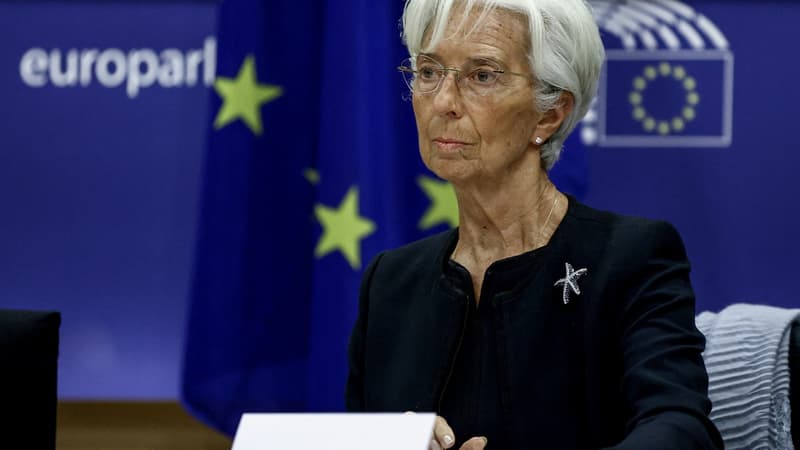The European Central Bank is expected to raise its benchmark rates again on Thursday in the face of inflation still considered too high, despite discontent in some countries over the risk of a weakening economy. One year into the fastest rate hike cycle in history, the euro gatekeepers are staying the course, even as the peak seems closer.
The president of the ECB, Christine Lagarde, already announced in June a new increase “very likely” for the meeting of its Board of Governors on Thursday. “Virtually everyone expects a 0.25 percentage point increase,” like in June, Joachim Nagel, head of Germany’s influential central bank, said last week. This would bring the bank liquidity deposit rate at the ECB, which he refers to, to 3.75%.
And then? The interest of the meeting “will focus more on the indications that the ECB could give on the future direction of monetary policy,” according to Eric Dor, director of economic studies at the IESEG School of Management. With the September meeting in sight. To fight record inflation in the euro zone after the post-pandemic recovery and then the outbreak of the Russian war in Ukraine, the ECB has raised its reference rates at unprecedented speed since last July, increasing them by 400 basis points in one year.
way to go
This policy increases the cost of borrowing for companies and households, which should cause a drop in demand and, therefore, in economic activity. The ECB’s hope is that this will reduce the ability of companies and businesses to raise prices, while moderating wage demands. The institution feels urgent to insist even more because, excluding energy, the slowdown in price growth is still very limited.
From a record 7.9% in March 2023, the aggregate (the indicator used by the ECB for inflation) dipped timidly to 6.9% in June 2023. This makes Christine Lagarde say at will that the ECB still has “some way to go” to influence prices.
The ECB will decide on Thursday the day after the US Fed, which is expected to announce another rate hike, its 11th since March 2022, after observing a pause in June. Recent data shows that the Fed’s policy is calming inflation without causing an increase in unemployment.
reviews
However, in the euro zone, the restrictive monetary policy is going increasingly wrong with certain fragile European economies. Higher rate increases induce “higher risks of creating a more difficult situation for growth at the European level,” Portuguese Finance Minister Fernando Medina said in mid-July. Before him, the head of the Italian government, Giorgia Meloni, had criticized at the end of June the ECB’s “simplistic recipe” consisting of raising interest rates to fight inflation, fearing that “the remedy is more harmful than the disease”.
Eurozone central bankers have inflation as their compass and “the costs of doing too little” on rates “are still higher than the costs of doing too much,” replies Isabel Schnabel, a member of the ECB’s executive committee. The same story with the president of the German Central Bank, Joachim Nagel, a “hawk” follower of a rigorous monetary course, according to which inflation is “a greedy beast” and “to launch the fight too soon (would be) a mistake”.
His counterpart at Bank of the Netherlands, Klaas Knot, is more measured and believes that another rate hike in September is “at best a possibility, but certainly not a certainty.” An increase in July should be enough and further tightening could “damage the economy,” warns Bank of Greece Governor Yannis Stournaras, a “dove” in favor of looser monetary policy.
Source: BFM TV


